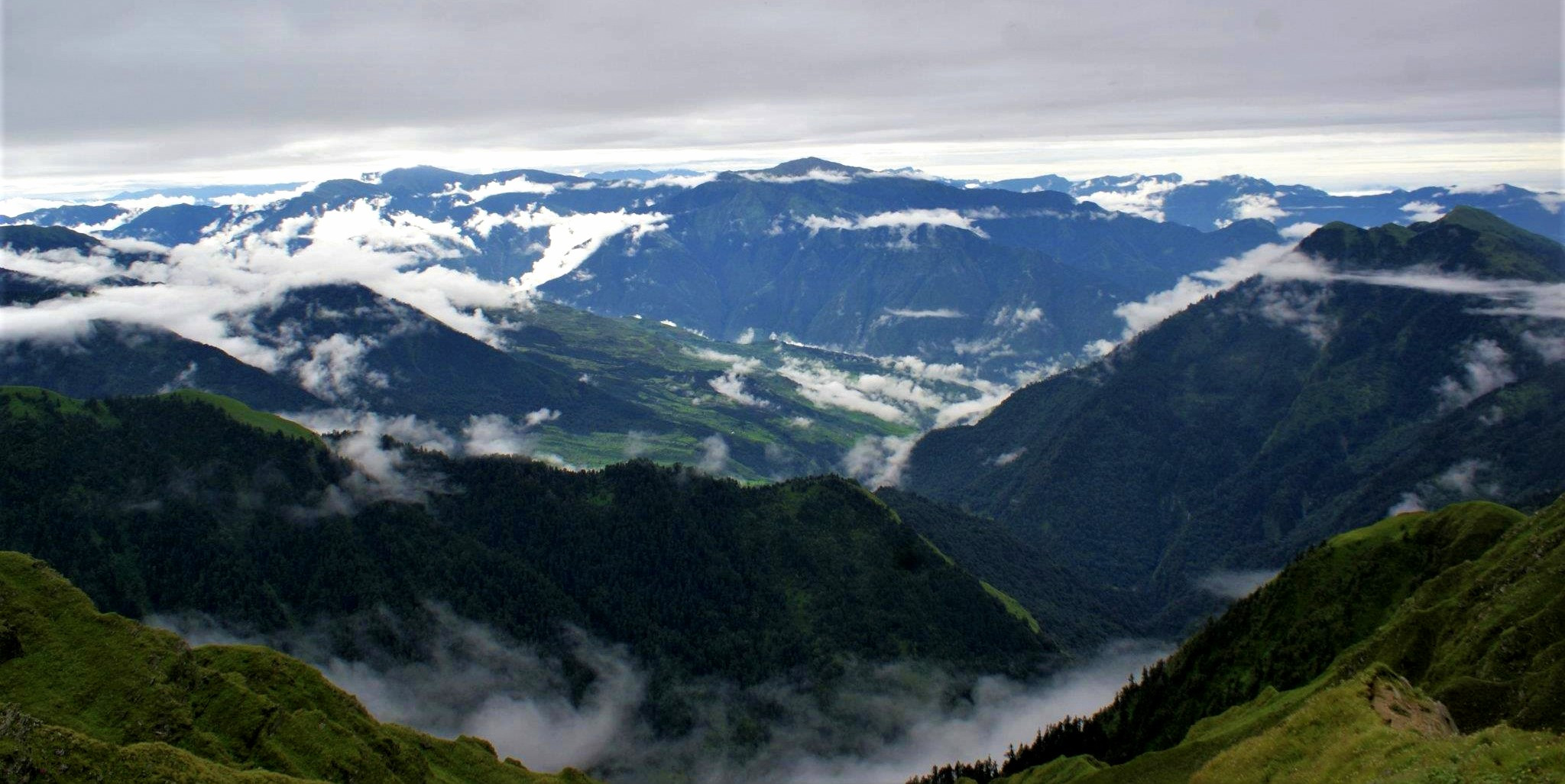Mount Everest
Mount Everest, known in Nepali as Sagarmatha and in Tibetan as Chomolungma, stands as the highest peak in the world at a staggering height of 8,848.86 meters (29,031.7 feet). This colossal mountain is part of the Himalayan range in the Mahalangur Himal sub-range and straddles the border between Nepal and the Tibet Autonomous Region of China.

-
Historical and Cultural Significance: Everest holds deep cultural significance, particularly for the local Sherpa community and Tibetans. It is considered sacred and is often personified as a deity. The first successful ascent was made by Sir Edmund Hillary from New Zealand and Tenzing Norgay, a Sherpa of Nepal, on May 29, 1953. This historic climb has since turned Everest into a symbol of human perseverance and adventure.
-
Trekking and Expeditions: The adventure to Everest begins with either the trek to Everest Base Camp (EBC), one of the most popular trekking routes in the Himalayas, or the ambitious endeavor to summit the peak. The base camp itself is situated at an elevation of about 5,364 meters (17,598 feet) and provides breathtaking views of the formidable peak. The trek to EBC offers stunning vistas of other high peaks and allows trekkers to immerse themselves in the local Sherpa culture.
-
Conservation and Challenges: The popularity of Mount Everest has also brought several challenges, including environmental concerns like waste management and the impact on the local ecosystem. Efforts are ongoing to implement sustainable practices and manage the number of visitors to help preserve the area's natural beauty.
-
Visiting Mount Everest: For those looking to experience Everest without the extreme challenge of summiting, helicopter tours provide aerial views of the peak and the surrounding Himalayas. These tours offer a unique perspective of Everest, making the magnificent mountain accessible to those who cannot trek or climb.
Mount Everest is not only a natural wonder but also a beacon for extreme adventure and cultural reverence. It continues to attract and inspire people from all over the world, symbolizing the ultimate challenge and adventure in the realm of mountaineering.
Annapurna Range
The Annapurna Range, located in the central Himalayas of Nepal, is one of the most magnificent and popular trekking destinations in the world. It encompasses several peaks over 7,000 meters, including Annapurna I, the tenth-highest peak in the world at 8,091 meters (26,545 feet). This region is not just famous for its challenging peaks but also for its breathtaking landscapes, diverse ecosystems, and rich cultural heritage.
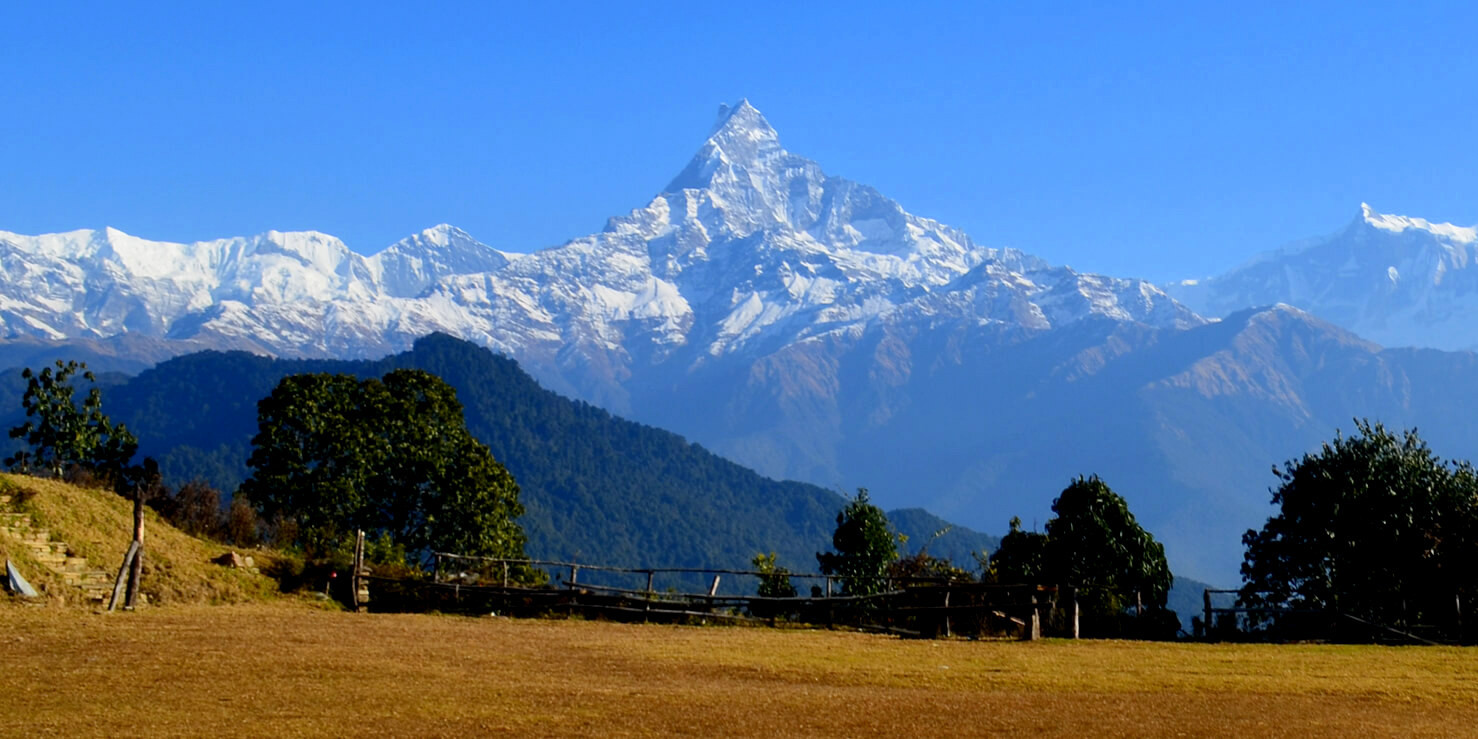
-
Geographical Overview: The Annapurna Range spreads across several districts in Nepal and is part of the larger 55,000 square kilometer Annapurna Conservation Area, the first and largest conservation area in Nepal. The range includes Annapurna I, II, III, and IV, as well as Annapurna South, Gangapurna, and several other peaks.
-
Trekking and Exploration: Trekking in the Annapurna region offers a variety of experiences from the lush subtropical landscapes in the lower regions to the stark alpine terrain above. The most famous trekking circuit in the region, the Annapurna Circuit Trek, encircles the entire massif, offering an extraordinary variety of scenery and cultural diversity. Other popular treks include the Annapurna Base Camp Trek, which leads trekkers to the base of Annapurna I, and the Poon Hill Trek, known for its spectacular sunrise views over the Himalayas.
-
Flora and Fauna: The diverse altitudes and climates found within the Annapurna Conservation Area support a remarkable variety of plant and animal life. The area is home to over 1,200 plant species, including rhododendrons and bamboo, 102 mammals, 474 birds, 39 reptiles, and 22 amphibians. Notable wildlife includes the snow leopard, Himalayan tahr, and blue sheep.
-
Cultural Significance: The Annapurna region is also rich in cultural diversity. Many trekkers find the interaction with local communities as memorable as the landscapes. The area is predominantly inhabited by the Gurung and Manang communities in the lower regions, and by Tibetan cultures higher up. These communities offer warm hospitality and a chance to glimpse traditional lifestyles that have been maintained for centuries.
-
Sustainable Tourism: Sustainable tourism is a significant focus in the Annapurna region, with efforts to manage the environmental impact of trekking and to ensure the benefits of tourism are distributed widely among local communities. The Annapurna Conservation Area Project (ACAP) has been at the forefront of conservation efforts, working to preserve the region’s natural resources and improve the livelihoods of the local population.
-
Visiting Annapurna: For those planning to explore the Annapurna Range, the best times to visit are during the spring (March to May) and autumn (September to November) seasons, when the weather is most favorable and the views are clear. Whether you are an avid trekker looking for high adventure or someone who wishes to enjoy the natural beauty and cultural richness at a more leisurely pace, the Annapurna Range offers opportunities for all.
The Annapurna Range remains a symbol of natural beauty and adventure, drawing visitors from around the globe to experience its majestic peaks, vibrant cultures, and the unparalleled beauty of the Nepalese Himalayas.
Pokhara
Pokhara, often described as the "Jewel of the Himalaya," is nestled in the heart of Nepal, surrounded by the majestic Annapurna Range. This city is not only the second largest in Nepal but also one of the most popular tourist destinations in the country, renowned for its stunning natural beauty and its relaxed, laid-back atmosphere.
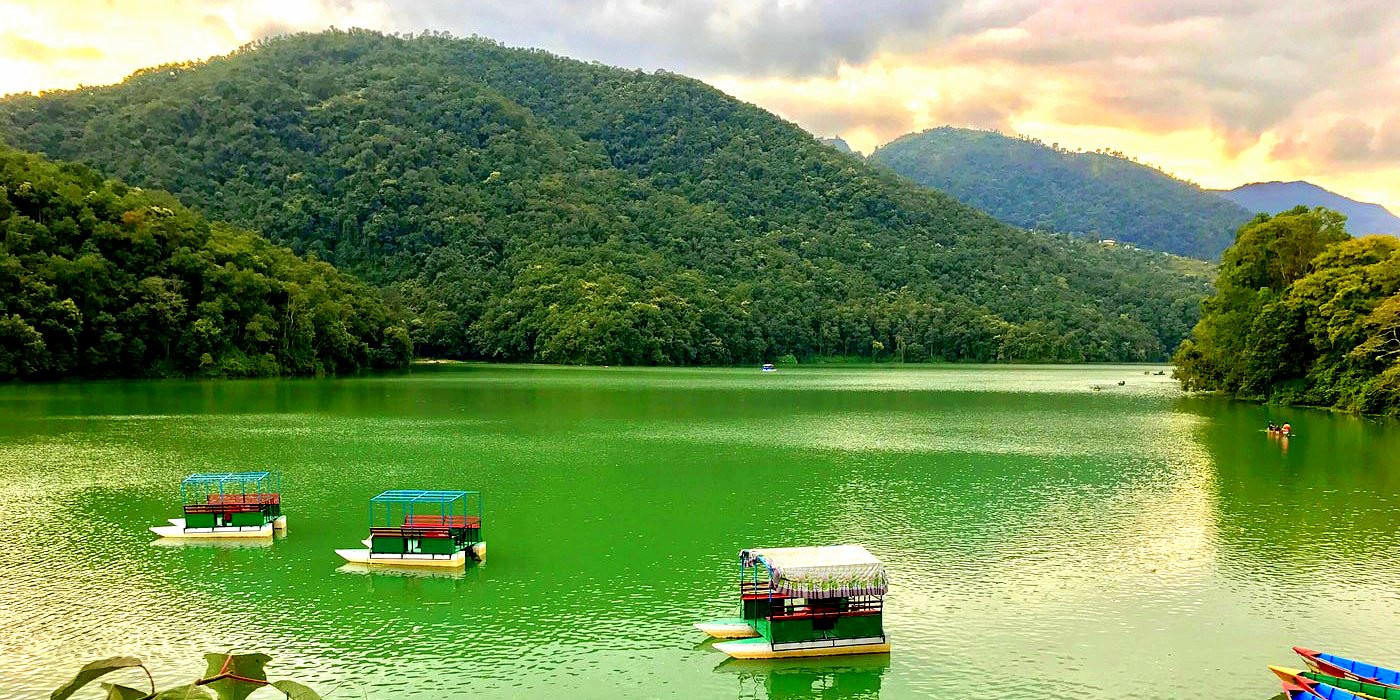
Geographical Setting: Situated about 200 kilometers west of Kathmandu, Pokhara lies alongside the beautiful Phewa Lake. The city is uniquely blessed with spectacular panoramic views of the Himalayan peaks, including Annapurna, Dhaulagiri, Machhapuchhre (Fishtail), and many others, which tower over 8,000 meters above sea level. Its proximity to the mountains makes it an ideal starting point for trekkers.
Attractions and Activities
Pokhara is a hub for adventure and relaxation, offering a diverse range of activities:
-
Phewa Lake: The second largest lake in Nepal, Phewa Lake is perfect for boating, with the reflection of Mount Machhapuchhre in its waters. The lakeside area is lined with shops, restaurants, and cafes, making it a lively place to relax.
-
Paragliding: Thanks to its favorable wind conditions and stunning aerial views of the lake and mountains, Pokhara is one of the best paragliding destinations in the world.
-
Trekking: Pokhara is the gateway to the Annapurna region, with access to famous treks such as the Annapurna Circuit and Annapurna Base Camp trek.
-
World Peace Pagoda: Situated on a hill overlooking Phewa Lake, this pagoda is a tranquil place that offers panoramic views of the city and its mountainous backdrop.
-
Devi's Fall: A stunning waterfall located just outside Pokhara, it is especially powerful during the monsoon season. Nearby, the Gupteshwor Cave houses a shrine dedicated to Lord Shiva and offers a unique view of the waterfall from within the cave.
Cultural Aspects: Pokhara is a melting pot of ethnicities and cultures, reflecting the diversity of Nepal. The local population includes Gurungs and Magars in the hills, and Brahmins, Chhetris, and Newars in the city, each adding their unique traditions and festivals to the cultural fabric of Pokhara.
Sustainability and Tourism: Pokhara has made significant strides in sustainable tourism practices to preserve its pristine environment and cultural heritage. The city promotes eco-friendly tours and activities, encouraging tourists to partake in responsible and sustainable travel.
Whether you're seeking adventure, a cultural immersion, or just a place to relax and enjoy nature, Pokhara has something to offer every traveler. Its scenic beauty, combined with the warmth of its people, makes Pokhara a must-visit destination in Nepal.
Chitwan National Park
Chitwan National Park is one of Nepal's most popular tourist destinations and a haven for wildlife enthusiasts. Established in 1973 and designated as a UNESCO World Heritage site in 1984, it covers an expansive area of 932 square kilometers and is known for its biodiversity, including some of the last populations of single-horned Asiatic rhinoceros and the Bengal tiger.
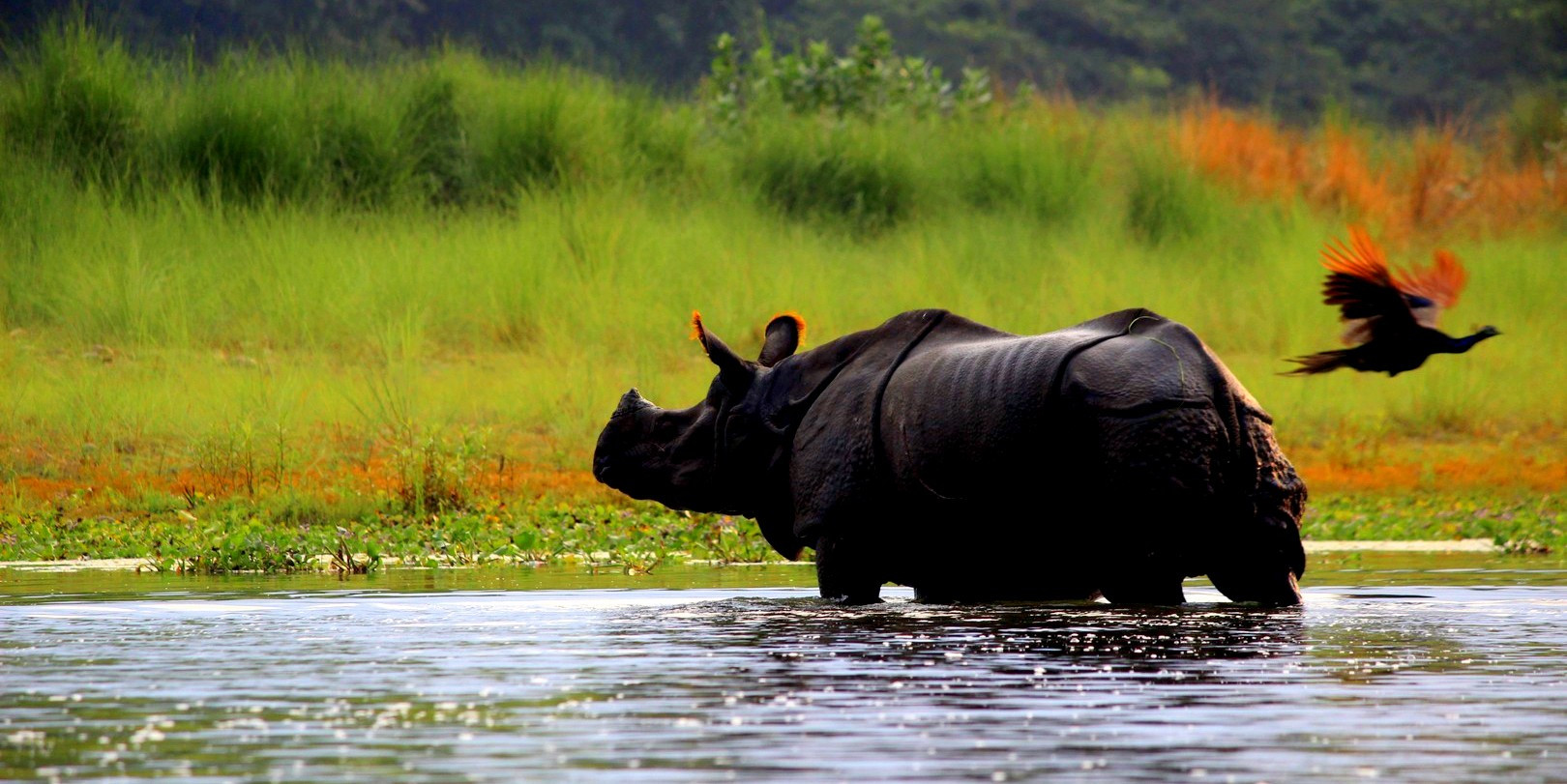
-
Geographic and Biological Diversity: Located in the subtropical Inner Terai lowlands of south-central Nepal, Chitwan National Park features a range of ecosystems, from dense forests and marshy grasslands to swift rivers. This variety supports an incredibly diverse array of flora and fauna. The park is home to over 700 species of wildlife and a not less significant number of bird species, making it one of the best bird-watching destinations in Asia.
-
Wildlife and Conservation Efforts: Chitwan is notable for its success in rhinoceros conservation. Once a hunting ground for big game, it has transformed into a conservation model with one of the highest shoring populations of the rhino after decades of protection efforts. Besides rhinos and tigers, the park is home to leopards, mugger crocodiles, Indian elephants, and over 500 species of birds. Chitwan’s commitment to conservation also extends to its community-based projects, which involve local people in the park's management and conservation efforts, ensuring that wildlife protection and community development go hand in hand.
-
Safari Experiences: Chitwan offers a variety of safari options including jeep safaris, canoe rides along the Rapti River, and guided jungle walks. These safaris provide visitors with the opportunity to observe wildlife in its natural habitat closely. The park's experienced guides enhance the experience by sharing insights about the wildlife and the ecosystems of Chitwan.
-
Cultural Interactions: Adjacent to the park are the Tharu villages, where visitors can experience the culture and lifestyle of the indigenous Tharu people. The Tharus are known for their unique mud houses and rich cultural heritage that includes traditional dances and music. Cultural tours and homestays are available, offering a deeper understanding of the local community and its traditions.
-
Accessibility: Chitwan is accessible by road and air, with the nearest airport in Bharatpur, just a short drive away. Regular flights from Kathmandu and an excellent road network make Chitwan easily reachable for both international and domestic tourists.
Chitwan National Park not only offers a retreat into nature but also serves as a critical conservation site in Nepal, showcasing the country's commitment to preserving its natural heritage while fostering sustainable tourism and community involvement. Whether you are an avid bird watcher, a wildlife enthusiast, or simply a nature lover, Chitwan provides an unforgettable experience in one of the most biodiverse regions of the Himalayan foothills.
Langtang National Park
Langtang National Park, established in 1976, is the first Himalayan national park in Nepal and the fourth protected area in the country. Covering an area of about 1,710 square kilometers, it spans parts of the Nuwakot, Rasuwa, and Sindhupalchok districts in the central region of Nepal. The park embodies a rich tapestry of climatic zones, from subtropical to alpine, due to the drastic elevation changes within its boundaries, which range from 1,500 to 7,234 meters above sea level.
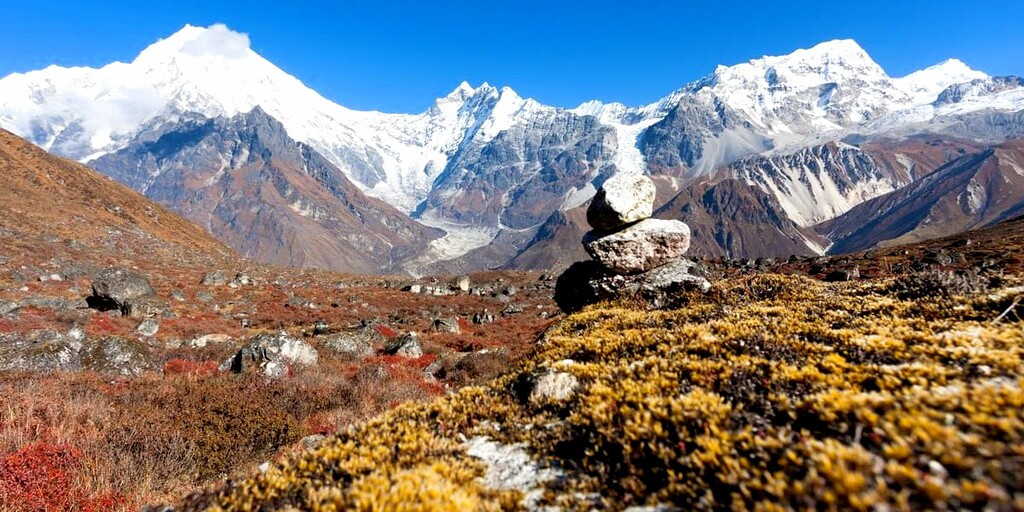
-
Biodiversity and Natural Features: Langtang National Park is renowned for its varied biodiversity. It is home to forests filled with oak, maple, pine, and various types of rhododendron. Higher up, the landscape transitions to alpine scrub and grasses. The park serves as a habitat for numerous wildlife species, including the red panda, Himalayan tahr, snow leopard, and more than 250 species of birds.
-
Trekking and Exploration: Langtang National Park offers a variety of trekking routes, each providing a unique experience. The Langtang Valley Trek is one of the most popular, often referred to as "the valley of glaciers." This trek passes through traditional Tamang villages, dense forests, and along the beautiful Langtang River. The trek also offers the opportunity to explore Kyanjin Gompa, a centuries-old Buddhist monastery, and the chance to hike up to the viewpoint at Tserko Ri for spectacular panoramic views.
-
Conservation and Community Involvement: Conservation efforts in Langtang National Park focus on protecting its rich biodiversity and promoting sustainable tourism practices. The park management collaborates closely with local communities, who are integral to conservation activities. These communities benefit from ecotourism, which supports their economy and encourages the sustainable use of natural resources.
Langtang National Park is an exceptional destination for those seeking to experience the natural beauty and cultural richness of the Himalayas without the crowds found in more popular trekking areas like Everest or Annapurna. It offers a profound sense of tranquility and the opportunity to witness the resilient spirit of the local communities.
Sagarmatha National Park
Sagarmatha National Park, established in 1976 and designated as a UNESCO World Heritage Site in 1979, is an iconic protected area in the Himalayas of eastern Nepal. It encompasses an area of 1,148 square kilometers, including Mount Everest, the world’s highest peak, known locally as Sagarmatha. The park extends over rugged terrain filled with deep gorges, glaciers, and massive rocks, located mostly above 3,000 meters (9,800 feet).
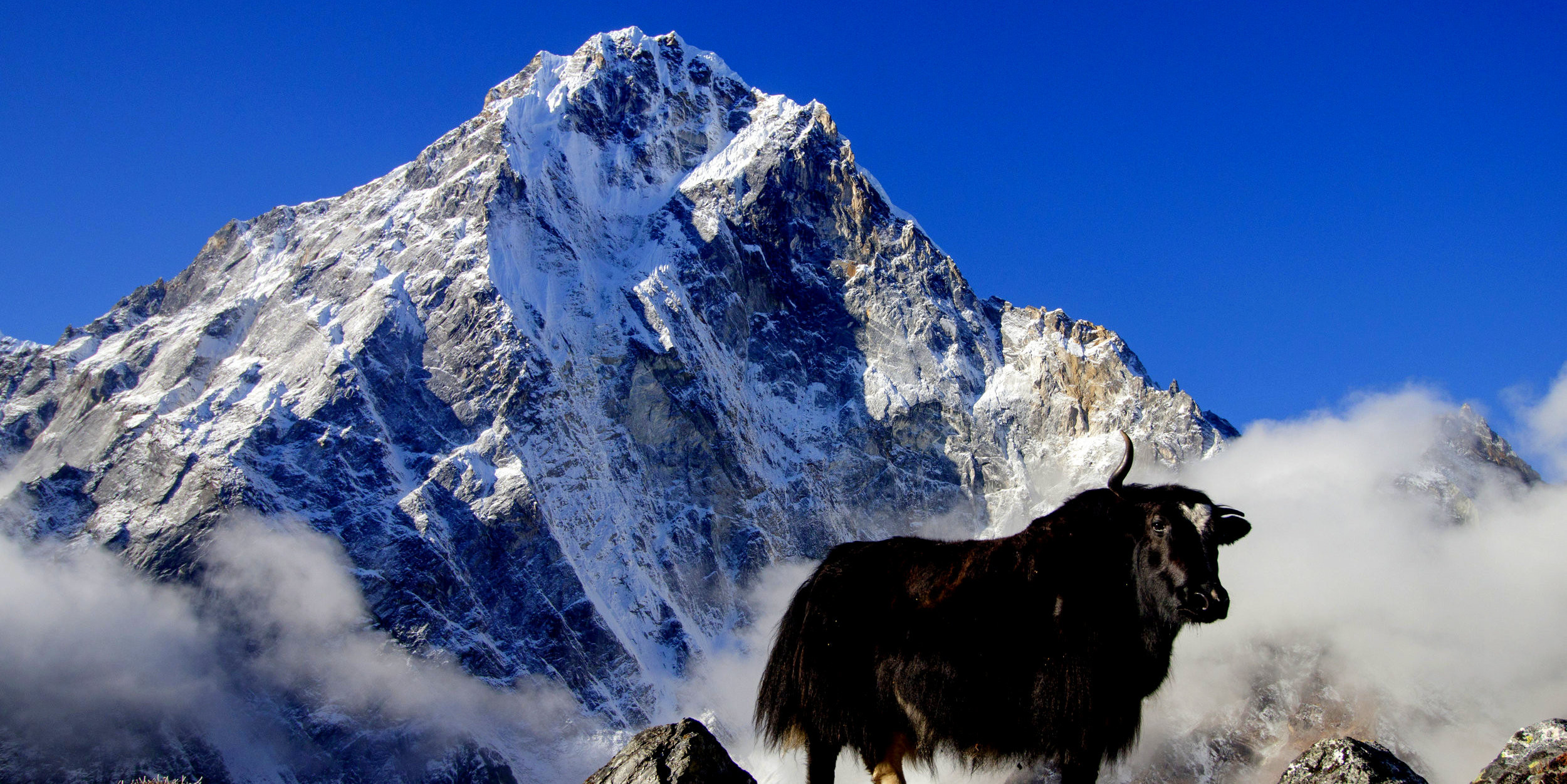
-
Biodiversity and Natural Features: The high-altitude environment of Sagarmatha National Park supports a range of unique flora and fauna adapted to the harsh climatic conditions. The vegetation in the lower areas is dominated by pine and hemlock forests, while above the tree line, you find alpine plants and scrub. Wildlife in the park includes species such as the snow leopard, Himalayan black bear, red panda, and Himalayan thars. It is also a habitat for several high-altitude bird species like the snowcock, pheasant, and yellow-billed chough.
-
Trekking and Exploration: Trekking in Sagarmatha National Park is world-renowned, primarily because it offers routes to the base camp of Mount Everest. Trekkers are treated to breathtaking views of towering peaks and can immerse themselves in the local Sherpa culture. The region is sprinkled with vibrant monasteries and prayer flags that add a colorful and spiritual element to the rugged landscapes.
-
Conservation Efforts: Conservation efforts in the park focus on protecting its fragile ecosystems and promoting sustainable tourism practices. The use of firewood is banned to prevent deforestation, and all trash produced by trekking activities must be removed from the park or managed sustainably.
-
Cultural Significance: The local Sherpa culture is an integral part of the Sagarmatha National Park experience. The Sherpas, with their unique traditions, religion, and lifestyle, offer a warm welcome to visitors, providing insight into life at high altitudes. Monasteries like Tengboche and Pangboche are significant cultural landmarks within the park, serving as centers of Buddhist worship and community gatherings.
Visiting Sagarmatha National Park provides not just a physical journey through stunning landscapes, but also a meaningful exploration of cultural heritage and natural conservation. It remains a pinnacle of mountain trekking adventures, drawing visitors from around the world to witness the grandeur of Mount Everest and the enduring spirit of the Sherpa people.
Lumbini
Lumbini, located in the Rupandehi District of Nepal, is revered as the birthplace of Siddhartha Gautama, who later became known as Buddha. This sacred site, recognized as a UNESCO World Heritage Site since 1997, is one of the most important spiritual sites in the world, attracting Buddhist pilgrims from around the globe who come to study, reflect, and meditate.
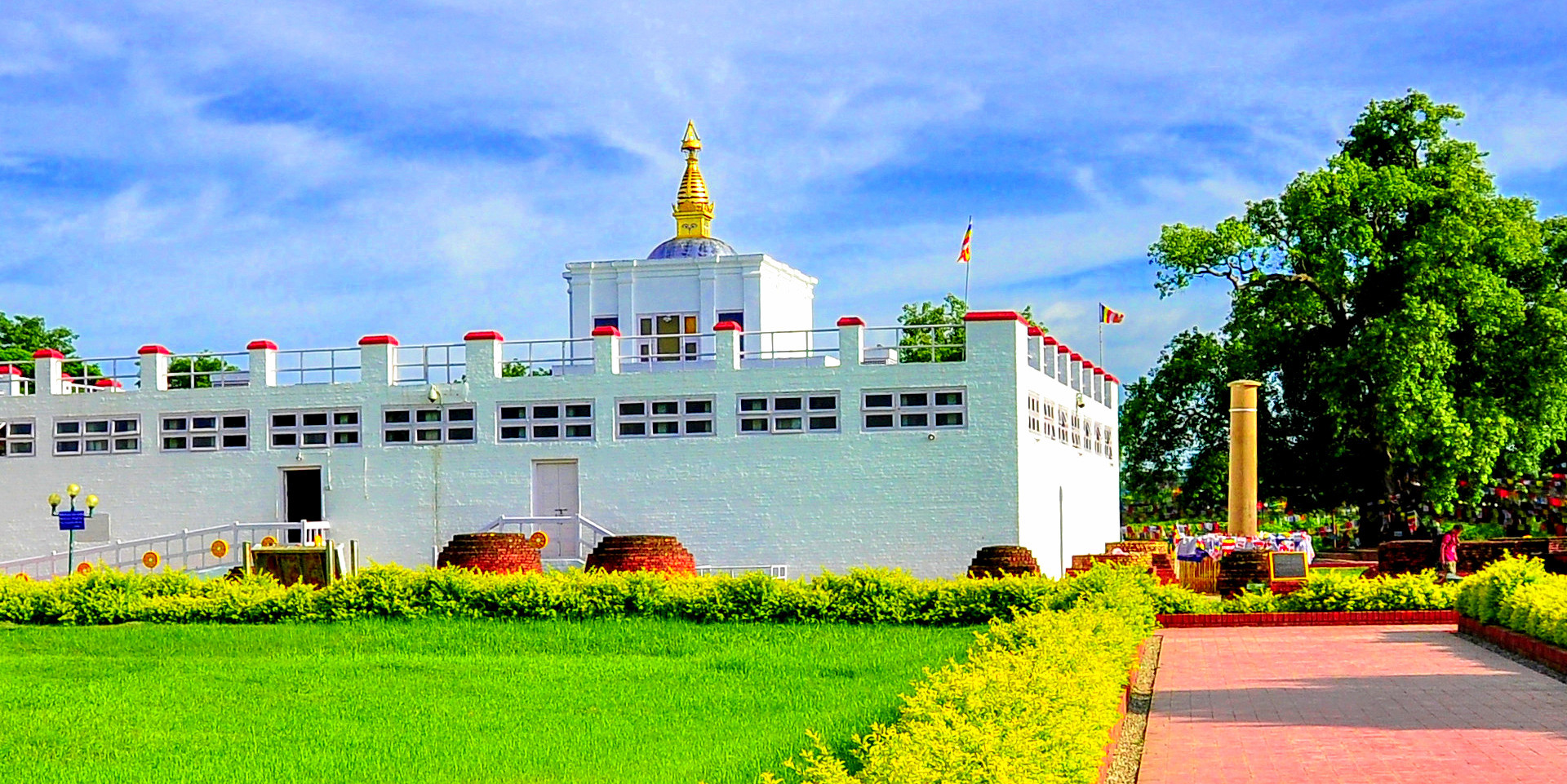
Historical and Spiritual Significance: According to Buddhist tradition, Queen Mayadevi gave birth to Siddhartha Gautama in 623 BC in the beautiful Sal grove of Lumbini. The site's historical significance is marked by the Maya Devi Temple, which is believed to stand on the exact spot where Buddha was born. The temple complex includes a sacred pond, Ashokan Pillar, and numerous ancient ruins and artifacts that chronicle the life of the Buddha and the development of Buddhism.
Architectural and Cultural Highlights: Lumbini has been developed into a large park known as the Lumbini Development Zone, which spans 4.8 kilometers by 1.6 kilometers and is divided into a monastic zone, where only monasteries can be built, and a non-monastic zone, which houses museums, hotels, and administrative buildings. The monastic zone is further divided into the eastern and western zones, reserved for Theravada and Mahayana (including Vajrayana) sects, respectively.
Peace and Meditation: In addition to being a historical pilgrimage site, Lumbini is designed to be a place of peace and reflection. The Lumbini International Research Institute provides resources and support for scholars studying various aspects of Buddhism. Furthermore, the Eternal Peace Flame, located in the center of the park, is a popular spot for meditation and contemplation, symbolizing the universal message of peace that Buddha espoused.
Visiting Lumbini
Visitors to Lumbini can explore a variety of attractions within the site:
-
Maya Devi Temple: This ancient temple houses the marker stone that indicates the exact spot of Buddha’s birth.
-
Ashokan Pillar: Erected by Emperor Ashoka in approximately 249 BC, this pillar bears an inscription that officially records Lumbini as the Buddha's birthplace.
-
Holy Pond: Where Buddha had his first bath after birth.
-
World Peace Pagoda: Built by the Japanese, this pagoda is one of many worldwide that aim to inspire peace among all peoples.
Lumbini not only offers a profound glimpse into the early life of one of the world's most influential spiritual leaders but also serves as a beacon of peace and tolerance. Its extensive archaeological sites alongside the modern monastic constructions make it a unique destination that provides insight into the past and present of Buddhist devotion and scholarship. Whether you are a spiritual seeker, a history enthusiast, or a casual visitor, Lumbini offers a serene and enlightening experience in the tranquil Terai plains of Nepal.
Rara Lake
Rara Lake is a pristine gem set in the remote highlands of northwest Nepal, known for its stunning natural beauty and tranquil surroundings. It is the largest lake in Nepal, situated within Rara National Park in Mugu District, and serves as a major attraction for both domestic and international visitors seeking solitude and a glimpse of unspoiled wilderness.
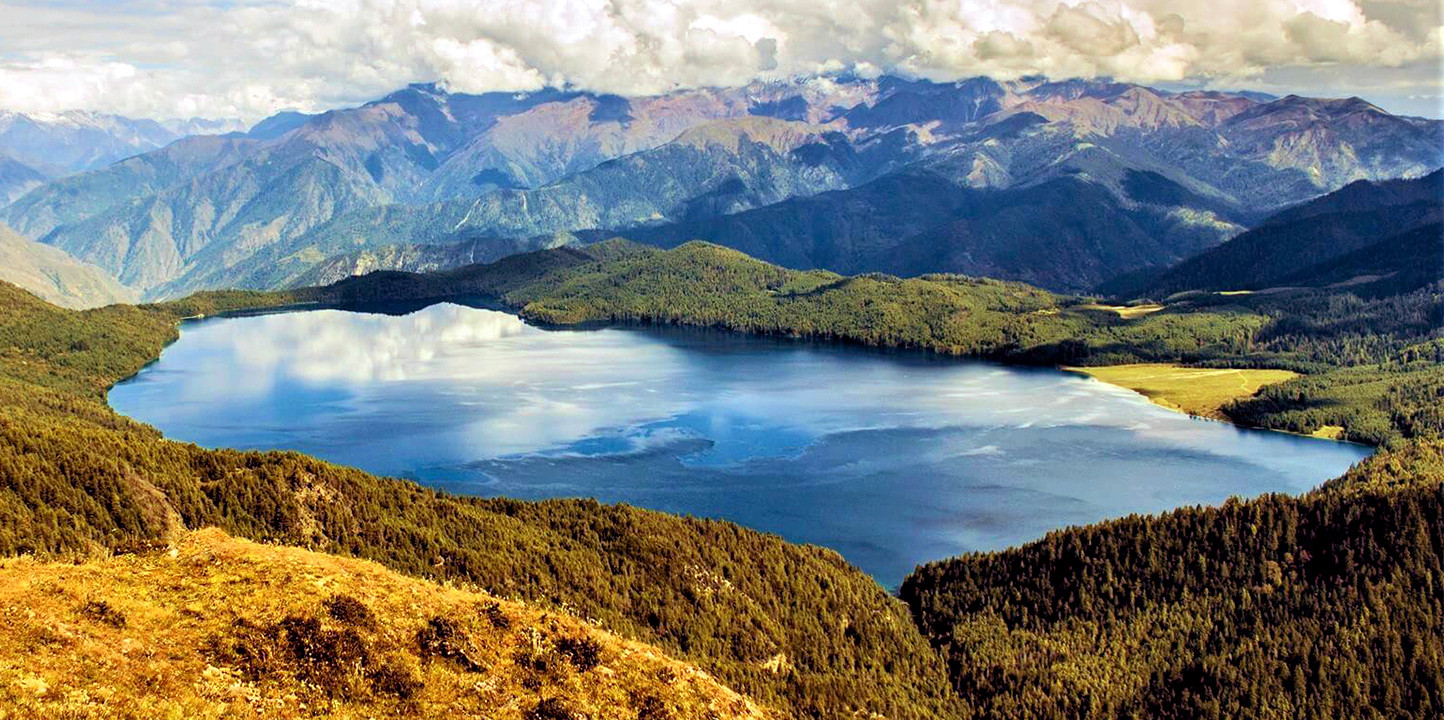
-
Geographic and Ecological Highlights: Rara Lake sits at an altitude of about 2,990 meters (9,810 feet) above sea level and covers an area of 10.8 square kilometers (4.2 sq mi). The lake is surrounded by alpine conifer forests and offers breathtaking views of snow-capped Himalayan peaks. Its crystal-clear blue waters are home to a variety of fish, while the surrounding area supports flora and fauna unique to this altitude.
-
Rara National Park: The lake is the centerpiece of Rara National Park, which was established in 1976 to protect the unique beauty of the lake and the surrounding hill forests. The park spans 106 square kilometers and is known for its biodiversity. It's home to species such as the Himalayan black bear, musk deer, red panda, and a variety of bird species, including the Himalayan monal, Nepal's national bird.
-
Trekking and Exploration: Reaching Rara Lake involves a trek that can be both challenging and rewarding. The journey to Rara is less frequented compared to Nepal's more popular trekking destinations, which offers a more solitary and intimate experience with nature. Trekkers typically start from Jumla, following a route that passes through remote mountainous villages, giving insights into the rural, rustic lifestyle and cultures of northwestern Nepal.
-
Activities and Attractions: Visitors to Rara Lake can engage in several activities such as boating, hiking around the lake, bird watching, and horse riding. The lake's serene environment makes it an ideal spot for those looking to unwind and enjoy peaceful moments in nature. The best views of the lake are often at dawn and dusk when the changing light casts different hues over the water and mountains.
-
Cultural Aspects: The region around Rara Lake is predominantly inhabited by the Khas ethnic group, and their unique culture and traditional lifestyles add an additional layer of interest for visitors. Local festivals and dances are a colorful insight into the heritage of the area.
-
Sustainable Tourism: Efforts are being made to promote sustainable tourism in Rara to preserve its natural beauty and cultural heritage. Visitors are encouraged to respect the delicate ecosystem and contribute to the conservation efforts by minimizing their environmental impact.
Rara Lake is a destination for those who are looking for a tranquil escape and the opportunity to experience nature at its most untouched and beautiful. Its remote location adds to its allure, offering a peaceful retreat away from bustling city life and a chance to reconnect with nature's serenity.
Khaptad National Park
Khaptad National Park, located in the far-western region of Nepal, is a lesser-known but incredibly significant conservation area renowned for its unique landscapes and rich biodiversity. Established in 1984, it spans an area of approximately 225 square kilometers, encompassing parts of four districts: Doti, Achham, Bajhang, and Bajura. Named after Khaptad Baba, a revered hermit who meditated here, the park offers a tranquil retreat into one of Nepal's most pristine natural environments.
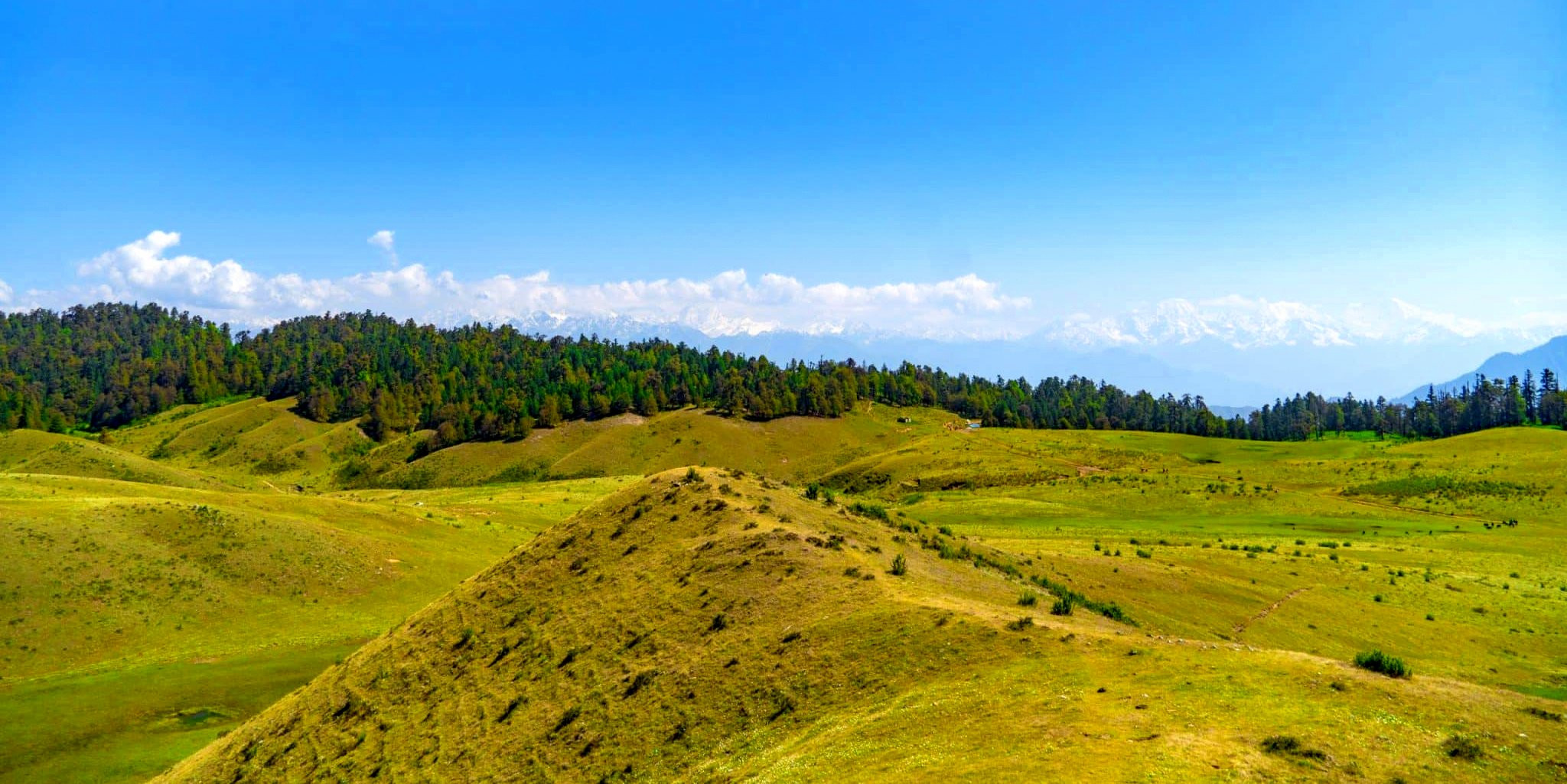
-
Geographic and Ecological Highlights: The park features a mix of rugged landscapes with rolling green hills, open grasslands, dense forests, and steep slopes. It sits at an elevation range between 1,400 and 3,300 meters above sea level, creating a diverse ecological zone that transitions from sub-tropical to temperate climates. This variation in altitude supports a rich array of flora and fauna. Over 567 species of flora, including rhododendron forests, oak, and pine trees, can be found here.
-
Biodiversity: Khaptad National Park is a haven for wildlife enthusiasts. It is home to a variety of wildlife including leopard, Himalayan black bear, wild dog, and deer species such as musk deer and barking deer. It is also an important bird-watching destination with more than 270 species of birds, including the Impeyan pheasant, the national bird of Nepal, and other rare species like the white-tailed rubythroat and the scaly thrush.
-
Trekking and Exploration: Trekking in Khaptad National Park offers a unique experience due to its remote location and the serene beauty of its landscapes. The area is crisscrossed with numerous trails that lead to various attractions within the park, including Khaptad Daha (a small lake), religious sites such as the Ashram of Khaptad Baba, and several temples including Tribeni. The trekking routes also offer panoramic views of the surrounding mountains, particularly during spring when the wildflowers are in full bloom.
-
Cultural and Spiritual Significance: The park holds great religious importance with several Hindu temples within its boundaries, and during the full moon of July-August every year, a large fair is held at Tribeni which attracts pilgrims from India and Nepal. The teachings and legacy of Khaptad Baba, who spent 50 years meditating and teaching in the area, also draw spiritual seekers.
-
Conservation Efforts: The park is actively involved in conserving its unique ecosystems and promoting sustainable tourism practices. Efforts include community-based programs that involve local populations in conservation activities and benefit-sharing from tourism.
Khaptad National Park remains a destination for those who wish to explore off-the-beaten-path natural settings and immerse themselves in the tranquility and spirituality of the Nepalese wilderness. Its combination of natural beauty, biodiversity, and cultural heritage makes it a special place for visitors seeking solitude and a deep connection with nature.
Manaslu Circuit Trek
The Manaslu Circuit Trek is a stunning and increasingly popular trekking route in the Himalayas of Nepal, known for its spectacular landscapes and cultural richness. The trek encircles Mount Manaslu, the eighth highest peak in the world at 8,163 meters (26,781 feet). This route is often praised as a quieter alternative to the more crowded Annapurna and Everest treks, offering trekkers a more secluded and authentic experience.
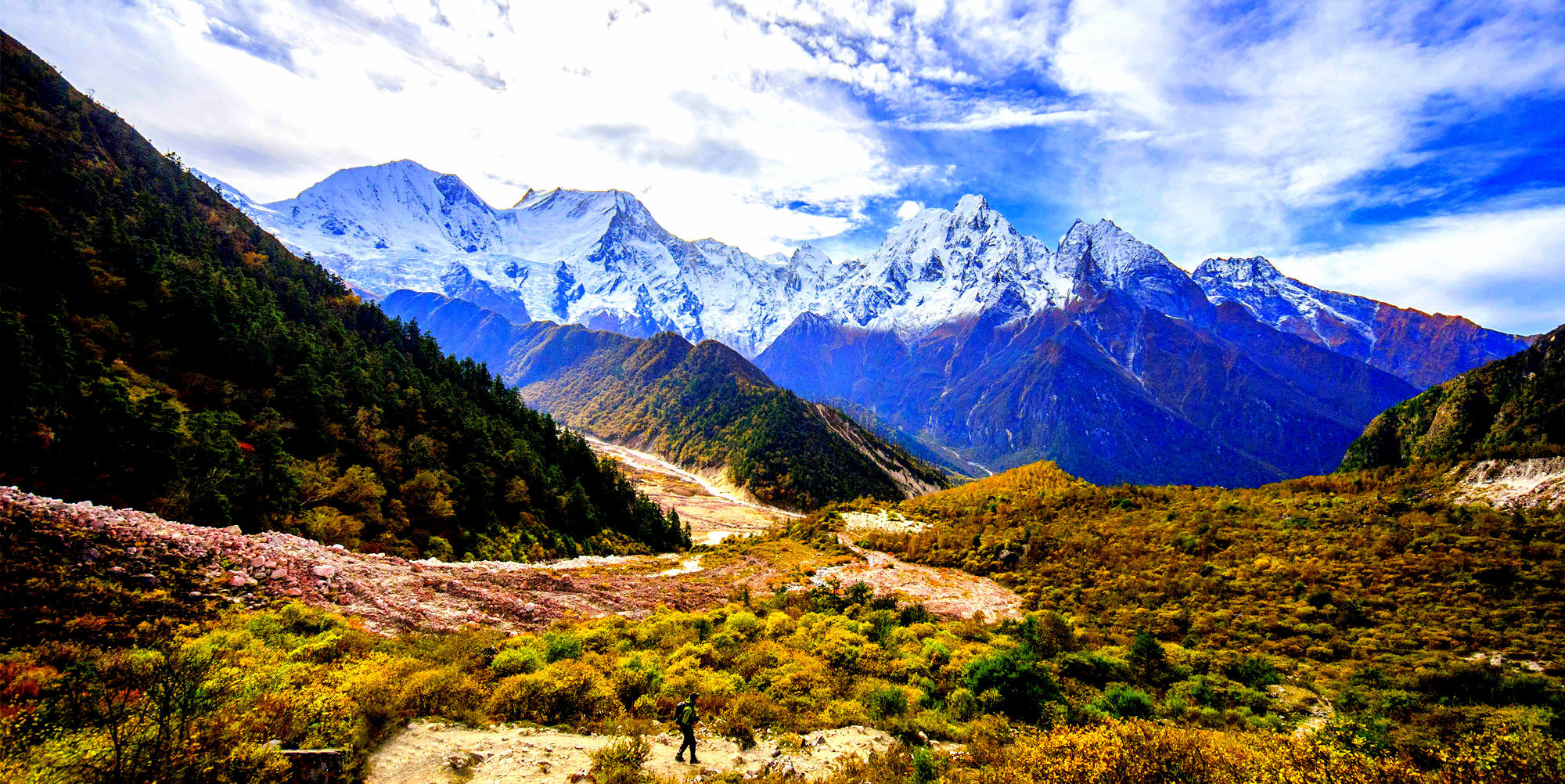
-
Geographic and Ecological Features: The Manaslu Circuit Trek typically starts in the lowland villages and gradually ascends into the alpine zones, passing through lush forests, terraced fields, and high-altitude landscapes. The trek reaches its highest point at the Larkya La Pass, which is at an elevation of 5,106 meters (16,752 feet). This pass provides dramatic panoramic views of Manaslu and neighboring peaks in the Himalayan range.
-
Cultural Immersion: The route passes through various ethnic communities, including Nubri and Tsum, where ancient Buddhist traditions and customs are still practiced. The trail is dotted with chortens, mani walls, and monasteries, reflecting the deep-rooted Buddhist culture of the region. Trekkers often note the warm hospitality of the local people, which adds to the richness of the experience.
-
Biodiversity: The trek traverses diverse ecosystems and is home to a variety of flora and fauna. The lower regions of the trek feature lush vegetation and forests, which are home to numerous bird species and wildlife, including the elusive snow leopard in the higher, more arid zones. As the trail ascends, the vegetation becomes sparser, giving way to rocky terrain and breathtaking alpine scenery.
-
Trekking Experience: The Manaslu Circuit Trek is considered challenging due to its high altitudes and the length of the trek, which typically takes around 14-20 days to complete. It requires good physical fitness and acclimatization to avoid altitude sickness. The trek offers a more remote path compared to other popular treks in Nepal, providing a peaceful trekking experience with fewer tourists.
-
Permits and Regulations: To preserve its pristine environment and promote sustainable tourism, trekking in the Manaslu region requires special permits, including the Manaslu Conservation Area Permit (MCAP) and the Annapurna Conservation Area Permit (ACAP) if continuing to the Annapurna region. Additionally, trekkers must be accompanied by a registered guide and be part of an organized trekking group.
-
Sustainable Tourism: Efforts are ongoing to ensure that tourism benefits the local communities without compromising the natural and cultural integrity of the region. This includes controlling the number of trekkers, promoting local employment, and using eco-friendly practices throughout the trek.
The Manaslu Circuit Trek is ideal for those looking for a challenging yet rewarding Himalayan experience. It offers a blend of stunning natural beauty, rich cultural interactions, and a sense of adventure that makes it one of the most fulfilling treks in Nepal.
Tips for Natural Tourist Attractions in Nepal
Exploring the natural tourist attractions in Nepal can be a thrilling and enriching experience. To make the most of your adventure, here are some essential tips to ensure a safe, enjoyable, and responsible trip:
Plan and Prepare Thoroughly
-
Research: Familiarize yourself with the regions you plan to visit, understanding the climate, terrain, and potential hazards.
-
Itinerary: Depending on your interests, whether it’s trekking, wildlife safaris, or cultural tours, tailor your itinerary accordingly. Consider hiring local guides for in-depth and safer experiences.
-
Fitness: Many natural attractions in Nepal involve rigorous activities like trekking or hiking. Ensure you're physically prepared for the challenges by training and consulting with your doctor if needed.
Pack Appropriately
-
Clothing: The weather in the mountains can change rapidly. Pack layerable, moisture-wicking clothing and always have a waterproof jacket.
-
Gear: Depending on your activity, ensure you have the appropriate gear. For trekkers, this might include sturdy boots, trekking poles, and a comfortable backpack.
-
Health: Bring a basic first aid kit, medications you might need, and water purification tablets or tools.
Respect Local Customs and Culture
-
Cultural Sensitivity: Nepal is culturally diverse. Take the time to learn about the customs and traditions of the local communities you will visit. Simple gestures like asking for permission before taking photos can show respect and foster goodwill.
-
Language: Learning a few basic phrases in Nepali can enhance your interaction with locals and show your respect for their culture.
Environmental Awareness
-
Leave No Trace: Preserve the natural beauty of Nepal by carrying out everything you bring in, disposing of waste properly, and avoiding single-use plastics.
-
Wildlife Encounters: Maintain a safe distance from wildlife and never feed the animals. Use binoculars for a closer look instead of approaching closely.
Stay Safe
-
Travel Insurance: Always have travel insurance that covers high-altitude trekking and medical evacuation, if necessary.
-
Local Guidance: Utilize the knowledge of local guides, especially in remote areas or for challenging treks like the Everest Base Camp or Annapurna Circuit.
-
Weather Awareness: The weather can be unpredictable, especially at high altitudes. Always check forecasts and be prepared for sudden changes.
Acclimatization
Stay Connected
-
Communication: While remote areas might have limited connectivity, consider renting a satellite phone or purchasing a local SIM card for areas with coverage.
-
Emergency Contacts: Keep a list of emergency contacts, including local authorities, embassies, and family back home.
Sustainable Practices
-
Support Local: Whenever possible, eat at local restaurants, stay in locally-owned lodges, and buy handmade crafts as souvenirs. This supports the local economy and reduces the environmental impact.
By following these tips, you can ensure that your visit to Nepal's natural attractions is not only memorable but also respectful and responsible, contributing positively to the local environment and communities.
Ideal Time for Natural Tourist Attractions in Nepal
Nepal's diverse climate zones and altitude variations mean the ideal time to visit its natural tourist attractions can vary depending on the specific region and activities planned. Generally, the best times to visit Nepal for outdoor activities and sightseeing are during the spring and autumn seasons. Here’s a detailed look at these optimal travel periods:
Spring (March to May)
-
Weather: Spring is a fantastic time in Nepal as the weather is generally mild and stable with clear skies. Temperatures are comfortable, making it ideal for trekking and exploration.
-
Nature: This season is especially beautiful as flowers, including rhododendrons, the national flower of Nepal, are in full bloom, blanketing the landscapes in vibrant colors.
-
Visibility: The air is clearer after the winter, offering excellent visibility of the mountains. This is a prime time for photography and long-range views from viewpoints across trekking routes.
Autumn (September to November)
-
Weather: Autumn is considered the best trekking season in Nepal due to its dry weather and moderate temperatures. This period follows the monsoon season, so the landscapes are lush and the air is fresh.
-
Festivals: Major Nepali festivals such as Dashain and Tihar fall during this season, offering visitors a chance to experience Nepal’s rich cultural festivities.
-
Visibility: Similar to spring, the visibility is high, with minimal cloud cover, providing superb conditions for mountain treks and scenic tours.
Other Considerations
-
Summer/Monsoon (June to August): The monsoon season can be challenging for visiting many of Nepal's natural attractions due to heavy rains, slippery trails, and potential flight delays due to poor visibility. However, the rain brings lush greenery, and some regions like the Upper Mustang and Dolpo, which are in rain-shadow areas, remain ideal for trekking even during the monsoon.
-
Winter (December to February): Winter in Nepal is cold, especially at high altitudes, which can make trekking less comfortable. However, lower elevation treks are still enjoyable, and the winter season offers the advantage of fewer tourists and more peaceful trails. The views are still spectacular, albeit with colder weather.
Choosing the right time to visit Nepal can greatly enhance your experience, whether you're trekking in the majestic Himalayas or exploring the rich biodiversity and cultural heritage of the region.
Offering a range of stunning sceneries and exciting outside sports, Nepal is a natural paradise. From the majestic Himalayan mountains to green national parks and quiet spiritual spots, Nepal offers a varied and rewarding trip for every visitor. Perfect for hiking and unobstructed views of its breathtaking landscapes, the best seasons to go—spring and fall—present ideal conditions. With rich cultural background and a promise of sustainable tourism, Nepal is top still among people looking for adventure and a strong link with nature. Whether one is trekking high-altitude landscapes, going on wildlife safaris, or meditating in hallowed sites, Nepal welcomes everyone to see its special and pristine beauties.
FAQs for Natural Tourist Attractions in Nepal
Q: What is the best time to visit Nepal for trekking?
A: The optimal times for trekking in Nepal are during the autumn (September to November) and spring (March to May), when the weather is clear and temperatures are moderate.
Q: Do I need a guide to trek in Nepal?
A: While some treks can be done solo, hiring a local guide is strongly recommended for remote or restricted areas like the Manaslu Circuit or Upper Mustang. Guides enhance safety and provide valuable local insights.
Q: What are the must-see natural attractions in Nepal?
A: Essential natural attractions include Mount Everest, Annapurna Circuit, Langtang National Park, Pokhara Valley, Chitwan National Park, and the sacred site of Lumbini.
Q: Are there any permits required for trekking in Nepal?
A: Yes, most trekking routes require permits, such as the TIMS (Trekker's Information Management System) card, and additional permits for restricted areas like Manaslu and Upper Mustang.
Q: How should I prepare for high-altitude trekking in Nepal?
A: Prepare by maintaining good physical fitness, acclimatizing properly to avoid altitude sickness, packing appropriate clothing and gear for variable temperatures, and staying hydrated.
Q: What wildlife might I see in Nepal’s national parks?
A: Depending on the park, you might see Bengal tigers, one-horned rhinoceroses, red pandas, snow leopards, and a diverse range of birds and reptiles.
Q: Can I visit Nepal during the monsoon season?
A: While high-altitude trekking is not advisable during the monsoon (June to August), some regions like the Upper Mustang lie in the rain shadow and are suitable for visiting year-round.
Q: What cultural norms should I be aware of when visiting Nepal?
A: Dress modestly, especially in rural areas and at religious sites; always ask permission before photographing people; and be respectful of local customs and traditions.
Q: What are the accommodation options like on Nepal's trekking routes?
A: Accommodations range from basic teahouses offering dorm-style rooms to more luxurious lodges with private facilities, particularly in popular areas like the Everest and Annapurna regions.
Q: How do I ensure sustainable travel in Nepal?
A: Support eco-friendly practices by minimizing waste, using water sparingly, staying on established trails, and choosing eco-conscious tour operators.
For the Nepal tour, please click here.
If you are looking for different kinds of Nepal Tours or Trekking Packages, feel free to contact us.
